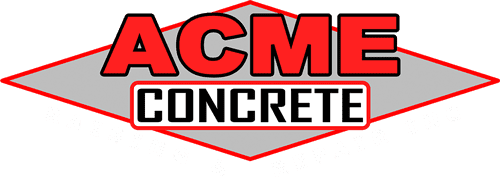Compressive Strength in Concrete Lifting: Why It Matters and Why “Higher PSI” Isn’t Always Better
Introduction: Why Compressive Strength Matters in Concrete Lifting When it comes to lifting and leveling sunken concrete (like driveways, sidewalks, or highway slabs), compressive strength is often a hot topic. Contractors might boast about ultra high PSI numbers for their lifting material, implying that a higher compressive strength means a
What Is Polyurethane Foam?
Understanding the Material Behind Modern Concrete Raising Polyurethane is a versatile, high-performance material used in a wide range of applications, but when it comes to raising and leveling sunken concrete, it becomes something even more remarkable. At Acme Concrete Raising & Repair, polyurethane foam is the key component in our
Concrete Lifting for Sunken Porches, Steps & Stoops | ACME Concrete
Is your front porch or stoop sinking, sloping, or causing a trip hazard? You’re not alone—and you don’t need to replace the concrete to fix it. How We Lift Sunken Porches, Steps & Stoops with Polyurethane Injection 👉 Watch the video below to see ACME Concrete Raising & Repair in
Raise, Level & Stabilize Sidewalks for Better Safety
Have you ever walked down a sidewalk, eyes on your phone or deep in thought, only to trip unexpectedly on an uneven slab? Maybe you’ve noticed the sidewalk outside your home or business becoming progressively uneven, cracked, or sinking awkwardly. Sidewalks settle naturally over time, creating hazards that can lead
Polyurethane Concrete Raising Fix Sunken Concrete
Understanding Concrete Raising: A Quick Guide from Acme Concrete Raising & Repair At Acme Concrete Raising & Repair, we’re Chicagoland’s original and most experienced specialists in polyurethane concrete raising. If you’re facing issues like sunken sidewalks, uneven driveways, or patios that no longer drain properly, concrete raising might be exactly
Polyurethane is a Smart Choice, But Not a Guarantee
When it comes to raising and leveling concrete, polyurethane injection has become the go-to solution. It’s far superior to old mudjacking techniques, offering a cleaner, more precise, and longer-lasting result. However, simply using polyurethane doesn’t guarantee success. Many factors determine whether a project is truly a high-value, long-term solution. As
Concrete Raising Services for Commercial Real Estate
Maintaining the integrity and safety of concrete surfaces is a crucial aspect of property management, particularly for commercial real estate. At Acme Concrete Raising & Repair, we’ve honed our expertise in raising concrete with polyurethane foam, serving the Chicagoland area longer than anyone else. Our specialized crews, equipped with state-of-the-art
POLYURETHANE FOAM CONCRETE RAISING VS MUDJACKING IN 2024
About Acme Concrete Raising & Repair Acme Concrete Raising & Repair (Acme) is Chicagoland’s original polyurethane injection specialist. Utilizing various polyurethanes, we raise and stabilize concrete and address complex problems in subsurface geology. Known for advanced solutions and using the highest-quality specialized materials and equipment, we’re the go-to company for
Specialization in Concrete Lifting Achieves the Best Results
Concrete lifting is a specialized field that demands specific skills, tools, and experience in order to execute properly. Our recent project, involving the restoration of a badly sunken and cracked garage floor, exemplifies the superiority of a company focused on this technology over a company providing multiple services. As such,
Lifting a Sunken Garage Floor in Rolling Meadows
Welcome to a garage floor project from the heart of Rolling Meadows, IL, presented by Acme Concrete Raising & Repair, the leading specialists in concrete lifting and repair solutions. This recent project involved lifting a significantly sunken garage floor, and allowed us to demonstrate our unparalleled expertise in the field.

